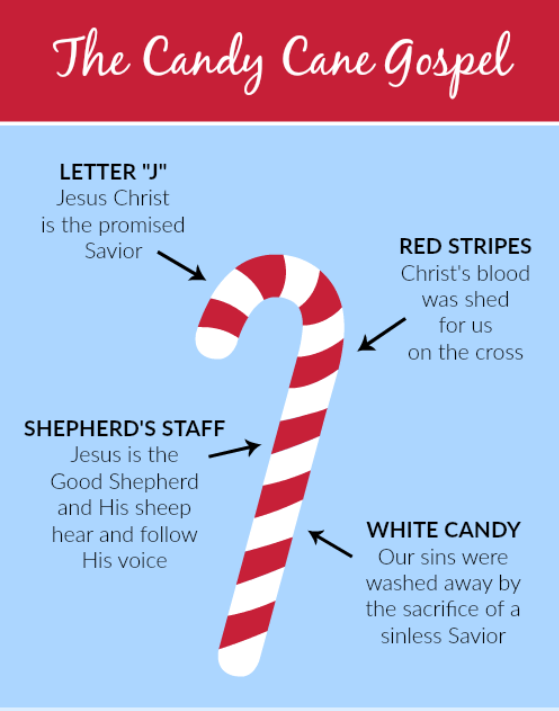As holiday joy flourishes in the month of December, Christmas traditions, seasonal edibles, gift giving, and beautiful décor are ever-present. The most wonderful time of year is a worldwide favorite, providing happiness and cheer for all. With so many customs established to celebrate this beloved holiday, Christmas would now be unimaginable if it did not include presents, hot cocoa, Christmas trees, and bright lights. In particular, the alleged candy cane has lasted for centuries, becoming a global symbol of holiday cheer. According to the National Confectioners Association, candy canes are the number one selling non-chocolate candy during the month of December. They may be yummy and adorable, but did you know that there is actually a story and a meaning behind them? While many people do not realize it, candy canes possess an important message, one that goes far beyond fictitious Christmas fun.
Legend has it that the candy cane dates all the way back to 1670, when a choirmaster at the Cologne Cathedral in Germany created them. The children received the candy during the long-winded nativity services to keep them quiet. Although not striped, the white candy was bent and shaped as a shepherd’s staff to honor the occasion. With its origins established in Germany, the candy cane was unchanged until it made its U.S. debut in 1847. A candymaker from Indiana, with the candy’s original purpose in mind, further utilized the sweet treat as a way to witness and spread the true meaning of Christmas.
The bent shape represented a “J” for Jesus; the red and white symbolized Christ’s blood and purity. The three red stripes also stood for the Holy Trinity. Furthermore, the hardness of the candy cane signified the Church’s foundation on solid rock, and the peppermint flavor represented the use of hyssop, an herb referred to in the Old Testament. When Georgian Bob McCormack invented a machine to expedite production, the popularity of the candy cane and its message skyrocketed.
Although the true origins of the candy cane are uncertain, its religious affiliation is undeniable. The popular candy is much more than a Christmas treat; it is a reminder of the real reason for the season. So each time you grab a candy cane, maybe you will remember the power of a little piece of candy.



